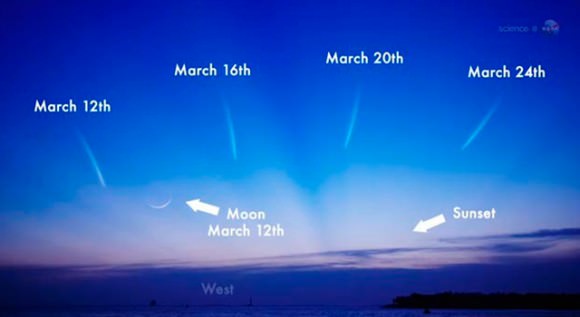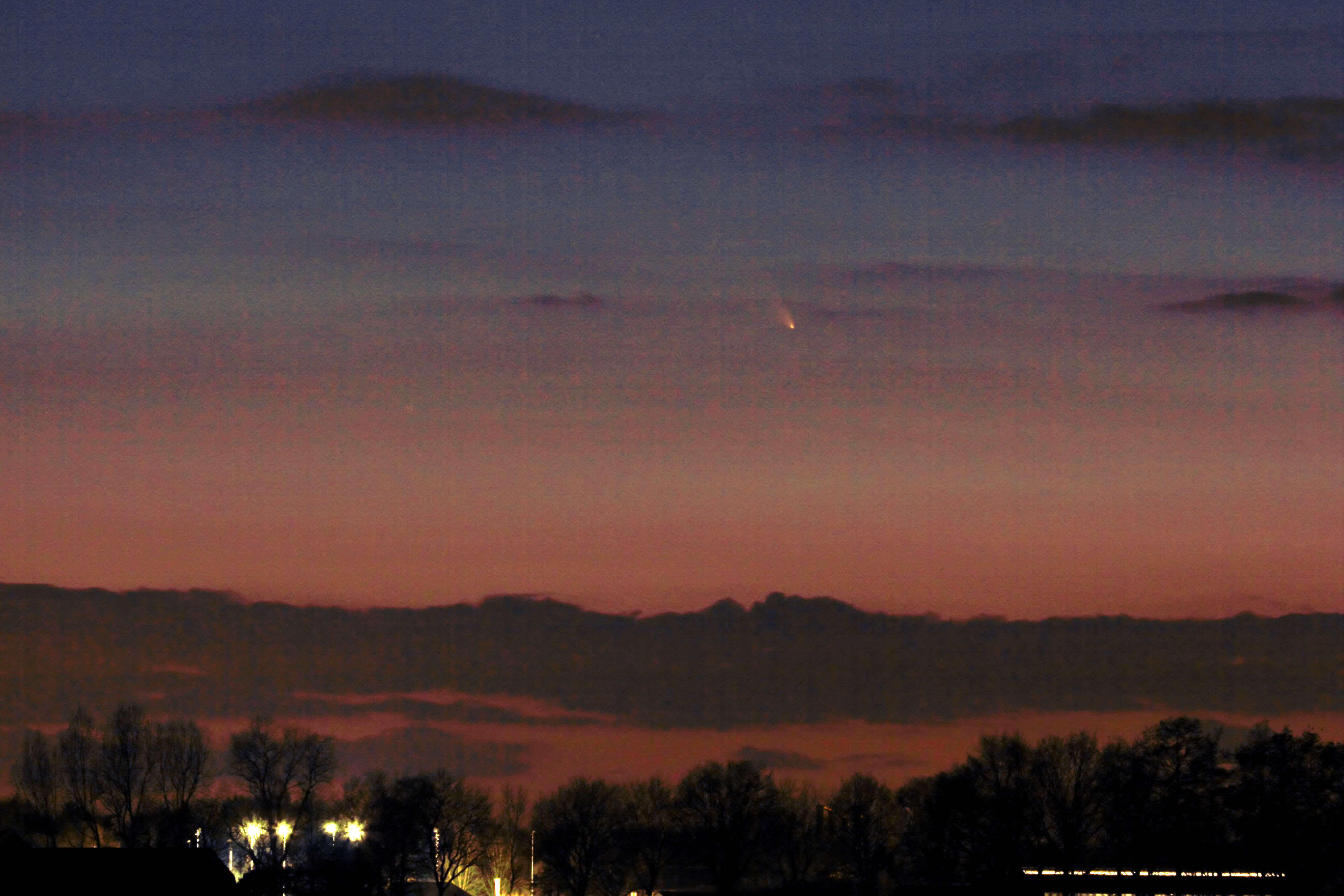Comet Pan-STARRS thrills Dutch observers of the Night Sky on March 14, 2013 shortly after sunset- note the rich hues. Shot with a Canon 60D camera and Canon 100/400 mm lens, exposure time 2 seconds, ISO 800. Credit: Rob van Mackelenbergh
See viewing guide and sky maps below
Update – see readers photo below[/caption]
Comet Pan-STARRS (C/2011 L4) is exciting amateur astronomers observing the night sky worldwide as it becomes visible in the northern latitudes after sunset. And now it’s wowing crowds in Europe and all over Holland – north to south.
Check out the beautiful, richly hued new photos of Comet Pan-STARRS captured on March 14, 2013 by Dutch astrophotographer Rob van Mackelenbergh.
“I took these photos in the southern part of the Netherlands on Thursday evening, March 14, at around 7:45 pm Dutch time with my Canon 60 D camera.”
“I was observing from the grounds of our astronomy club – “Sterrenwacht Halley” – named in honor of Halley’s Comet.”
Comet Pan-STARRS is a non-periodic comet from the Oort Cloud that was discovered in June 2011 by the Pan-STARRS telescope located near the summit of the Hawaiian Island of Maui.
The comet just reached perihelion – closest approach to the Sun – on March 10, 2013. It passed closest to Earth on March 5 and has an orbital period of 106,000 years.
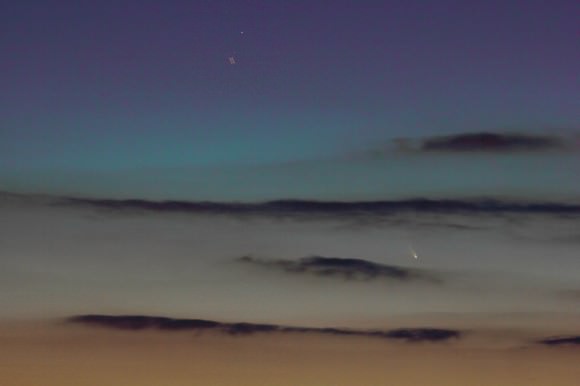
“Over 30 people were watching with me and they were all very excited, looking with binoculars and cameras. People were cheering. They were so excited to see the comet. But it was very cold, about minus 2 C,” said Mackelenbergh.
The “Sterrenwacht Halley” Observatory was built in 1987 and houses a Planetarium and a Celestron C14 Schmidt-Cassegrain telescope. It’s located about 50 km from the border with Belgium, near Den Bosch – the capitol city of southern Holland.
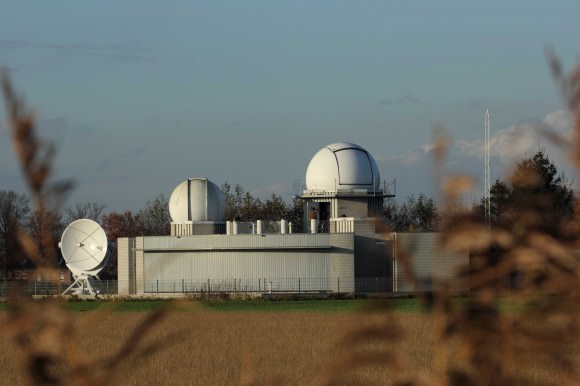
“It was hard to see the comet with the naked eye. But we were able to watch it for about 45 minutes altogether in the west, after the sun set.”
“The sky was completely clear except for a few scattered clouds near the horizon. After the comet set, we went inside the observatory for a general lecture about Comets and especially Comets Pan-STARRS and ISON because most of the people were not aware about this year’s pair of bright comets.”
“So everyone was lucky to see Comet Pan-STARRS because suddenly the sky cleared of thick clouds!”
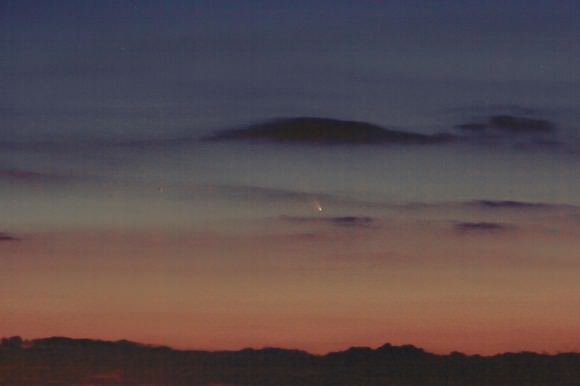
“In the past I also saw Comet Halley and Comet Hale-Bopp, but these are my first ever comet photos and I’m really excited !”
“I hope to see Comet Pan-STARRS again in the coming days when the sky is clear,” Mackelenbergh told me.
Over the next 2 weeks or so the sunset comet may grow in brightness even as it recedes from Earth into darker skies. Right now it’s about magnitude 0.2.
So keep looking with your binoculars; look west for up to 1 to 2 hours after sunset – and keep your eyes peeled.
And report back here !
See a readers photo of sunset Comet Pan-STARRS below
